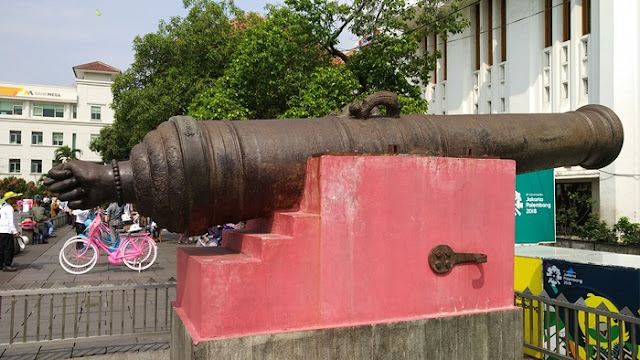If
you visit Fatahillah Square Old City Jakarta
In the “Old City Tour : Jakarta From Sunda Kelapa to Glodok Pancoran” by Pradaningrum Mijarto (2013), it said that the bronze cannon with an inscription of ”ex me ipsa renata sum” is famously called ”Si Jagur”. The name of Si Jagur is thought as result of simplification of the name of the saint St. Jago de Barra.
The
Portuguese cannon was carried off to Batavia
The
cannon was forged in Macau by MT Bocarro for the Malacca
Fortress. Another feature is the Mano in Fica (thumb in first) symbol, an
ancient representation of copulation or sexual union. In Roman tradition, that
symbol is associated with fertility and eroticism. Therefore a superstition
grew around the cannon. Couples wishing for children would come to the cannon,
sprinkle it with flowers and sit on the cannon.
Now, the “Si
Jagur” cannon stands between the Kantor Pos building and Gedoeng Jasindo
building at Fatahillah Square, Jakarta.


